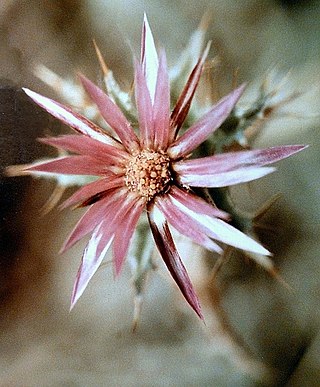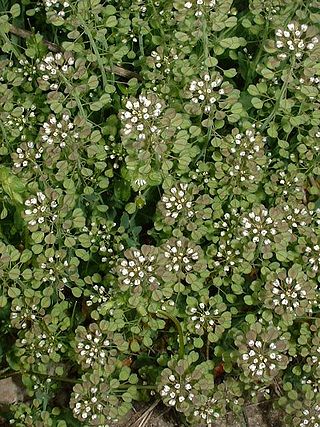
The Valerianaceae Batsch, the valerian family, was a family of flowering plants that is now considered part of the Caprifoliaceae. Plants are generally herbaceous, and their foliage often has a strong, disagreeable odor. They are found native in most regions of the world except for Australia. Some species are cultivated as ornamentals or used in herbal medicine for inducing relaxation and sleep.

Valeriana is a genus of flowering plants in the family Caprifoliaceae, members of which may by commonly known as valerians. It contains many species, including the garden valerian, Valeriana officinalis. Species are native to all continents except Antarctica, with centers of diversity in Eurasia and South America.

Valeriana rubra, the red valerian, spur valerian, kiss-me-quick, fox's brush, devil's beard or Jupiter's beard, is a popular garden plant grown for its ornamental flowers.

Valeriana trinervis is a species of plant in the family Caprifoliaceae. It is endemic to Corsica, France where there is a single sub-population near Bonifacio of which the only 140 of the individual plants remain. The common name of the plant is Centranthe À Trois Nervures in French. Its natural habitat is Mediterranean-type shrubby vegetation. It is currently threatened by habitat loss.

Malva setigera, also known as Althaea hirsuta, the rough marsh-mallow or hairy marshmallow, is a species of annual herb in the family Malvaceae. It has a self-supporting growth form and simple, broad leaves. Individuals can grow to 28 cm (11 in).

Asparagus horridus is a species of shrub in the family Asparagaceae. They are climbing plants. They have simple, broad leaves and fleshy fruit. Individuals can grow to 1 m (3.3 ft) tall.

Astragalus hamosus, the southern milk vetch or European milk vetch, is a plant in the family Fabaceae.
Astragalus sesameus is a species of plant in the family Fabaceae.

Carlina lanata is a species of plant in the family Asteraceae.
Carthamus caeruleus is a species of plants in the family Asteraceae.
Cutandia maritima is a species of herb in the family Poaceae.

Valeriana graciliflora is a species of flowering plant in the family Caprifoliaceae.

Hypecoum procumbens, the sickle-fruited hypecoum, is a species of annual herb in the family Papaveraceae. They have a self-supporting growth form and simple leaves. Individuals can grow to 40 cm tall.

Matricaria aurea is a species of plants in the family Asteraceae.
Mesembryanthemum lancifolium is a species of plant in the family Aizoaceae. They are succulent plants.

Valerianella eriocarpa is a synonym for Valeriana eriocarpa (Desv.) Christenh. & Byng, a species of flowering plant in the family Caprifoliaceae.

Verbascum creticum is a species of plants in the family Scrophulariaceae.

Parietaria lusitanica is a species of plant in the family Urticaceae.

Scorzonera laciniata, also known as cutleaf vipergrass, is a species of herb in the family Asteraceae.

Thlaspi perfoliatum is a species of plants in the family Brassicaceae.















